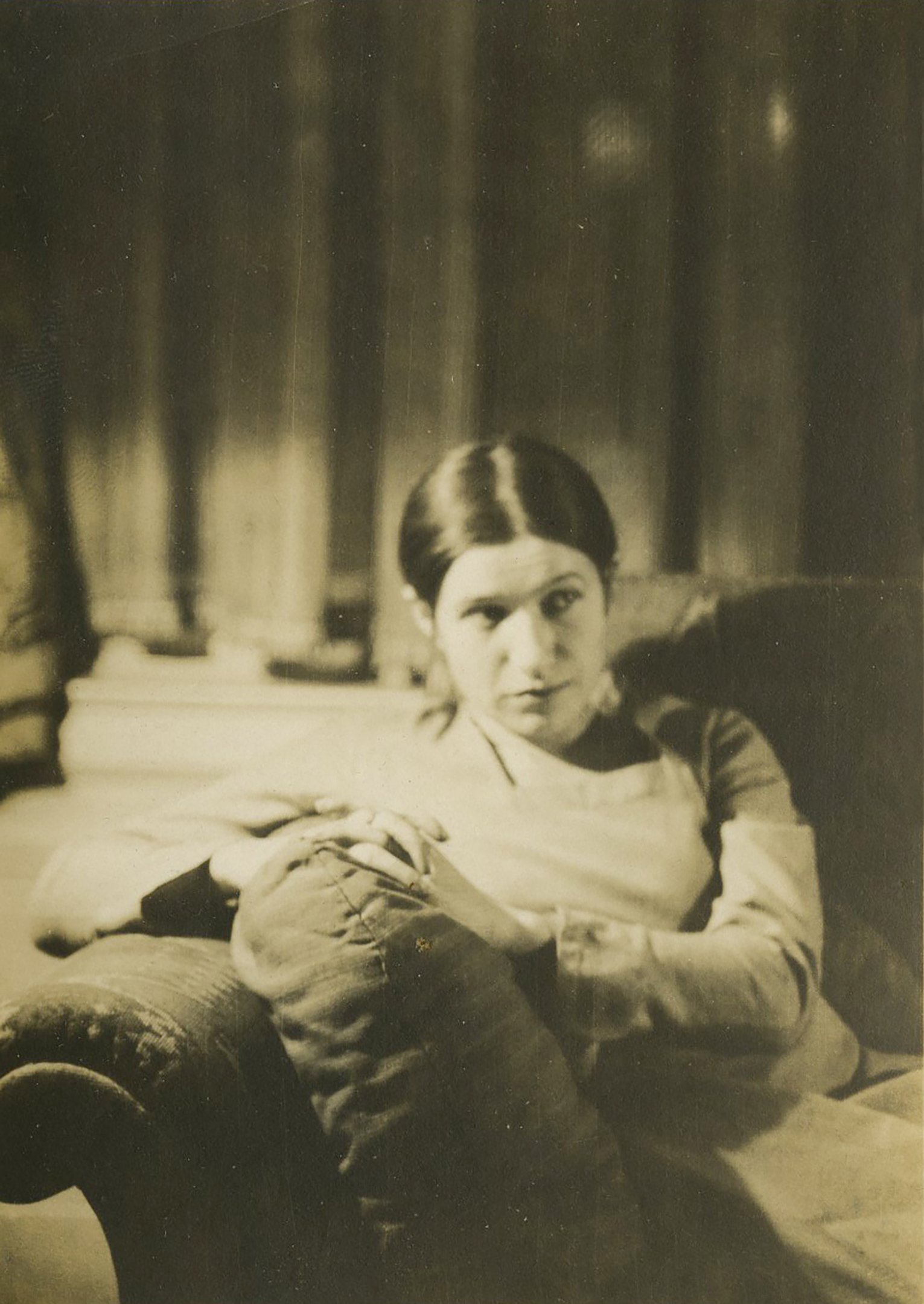
“Painting is like a mistress whom one must go through fire and water to meet.”
Chronology
1903 – 1929
-
1903
Biala, Poland: Schenehaia Tworkovsky is born in the village of Biała, a small village on the northeast border of Poland with Russian. At the time of her birth, Biała was a large garrison town of the Imperial Russian Army. Biala’s father (Hyman Tworkovsky), was a tailor who worked for the Russian Army. The record of the exact date of her birth being lost, her father, in registering her for Public School gave the date September 11, 1903 for her birthday.
-
1913
New York: The Armory Show opens in New York City and with it Modernism arrives in America. The purchase of this Cézanne by the Metropolitan Museum of Art from the Armory Show signaled the integration of modernism into official art channels. However, it was the shock and outrage from Duchamp’s Nude Descending the Staircase and Matisse’s Luxury that connected the Armory Show with the historic avant-garde.
Five months later (September 26), 10 year-old Schenehaia immigrates to America with her older brother, Jacob, and their mother. Reuniting with their father, who had opened a tailor shop on Ludlow Street, and their older half brothers and sisters, the family resides on Ridge Street in Manhattan’s Lower East Side. Like many immigrants arriving from ports all over the world, the family Tworkovska underwent a series of name changes. Jack and Janice struggle to assimilate to American culture at the turn of the 20th century.
-
1920-29
New York / Provincetown: Around this time, Jack and Janice move out of their tenement building and seek refuge in Greenwich Village. It is around this time that the pair reclaim their family name: Tworkov. After exploring a career as a writer, Jack dedicates himself to the life of an artist and begins studying at the Art Students League of New York in early 1923. Later that year Janice registers for art classes at the National Academy of Design (October 2) studying with Charles Hawthorne who would introduce both young artists to his artist colony in Provincetown, MA. She also studies at the Art Students League of New York (1924, 1925). Sister and brother enjoy vivid conversations about art, which includes an affinity for Modernism and love of Cézanne. Jack is taken with the remote yet thriving Provincetown scene and remains there experiencing modernism through the artist Karl Knaths. Janice marries fellow painter Lee Gatch but their relationship quickly becomes estranged. Janice then finds bohemian life in Greenwich Village.
New York / Provincetown: By late 1920, Janice was an established young artist with a growing reputation. She was a frequent exhibitor at the G.R.D. Studios (NY), a gallery that would later fuel the careers of many important American artists. She remains at the forefront of the fledgling art colonies of Woodstock (NY) and Provincetown (MA) associating with many artists including Blanche Lazzell, Shelby Schakleford, and Dorothy Loeb and generating close friendships with Edwin Dickinson and William Zorach.
-
1927
New York: Albert E. Gallatin opens The Gallery of Living Art (December 12). It is the first permanent public collection of abstract art in the U.S. providing “an informal atmosphere for intellectual exchange, as well as a place where artists could congregate and study the newest developments in European art.” Janice resides on West 15th Street, just blocks from The Gallery.
-
1929
New York: The Museum of Modern Art is founded. Alfred H. Barr, Jr. is its first director.
New York: The New York Stock market crashes (October 24), hastening in the Great Depression.

“I’d have no use for Paradise if it wasn’t like France.”
Biala and Daniel ‘Alain’ Brustlein boarding the de Grasse, one of the first passenger vessels allowed to cross the Atlantic for France following WWII, c.1947. Photographer unknown, courtesy Estate of Janice Biala, New York
1930 – 1949
-
1930
New York (January 27): Janice changes her name to Biala, at the suggestion of William Zorach, as a way to distinguish herself from Jack. “[…] I decided to change my name […] in order not to be confused with you. […] My name is now Biala […]” And so Janice Tworkov becomes the artist Janice Biala.
(Late April) Biala leaves for Paris at the invitation of her best friend Eileen Lake.
Paris: Biala is in rapture with her new bohemian life experiencing conversations on art and immersing in the culture of the cafe society in Paris. (May 1) She meets and falls in love with English novelist and founder of the Transatlantic Review, Ford Madox Ford. She becomes his greatest ally and remains in France with him until his death as his last companion.
Despite their financial struggles, Ford and Biala travel extensively during their life together. Ford introduces Biala to the best of European culture, socializing with the great Modernists writers and artists of the time particularly Ezra Pound, Gertrude Stein, George Antheil, Constanti Brancusi, Henri Matisse, and Pablo Picasso. She befriends American writers Katherine Anne Porter, Allen Tate, and Caroline Gordon. Ford and Biala divide their time between Paris and Villa Paul, their retreat in Toulon in the South of France.
-
1931
New York: Gertrude Vanderbilt Whitney establishes The Whitney Museum of American Art.
-
1932
Paris: Biala begins exhibiting in Paris. One such exhibition is held at Parc des Expositions (January 15-February 1). The exhibition was titled 1940, and fashioned itself at the cutting edge of modern painting. It included work by Arp, Mondrian, Picabia, and Villon among others and featured a retrospective of some fifty-nine paintings by Theo Van Doesburg. Alexander Calder is the only other American invited. Biala exhibited four paintings.
-
1935
New York: Ford’s Provence: from minstrels to the machine is published. It includes illustrations by Biala. Drawings and related paintings of which are exhibited in Biala's first solo exhibition in New York at the Georgette Passedoit Gallery. Biala's divorce from Lee Gatch is finalized.
-
1936
Paris: Brancusi visits Biala’s studio (May 28).
-
1937
Paris: Biala illustrates Great Trade Route by Ford Madox Ford (New York: Oxford University Press).
New York: Illustrations for Ford’s Great Trade Route and related paintings are exhibited at Gallery Georgette Passedoit (February 23).
Colorado: Baila exhibits new work at Denver Art Museum, Denver (August).
Michigan: Biala accompanies Ford to Olivet College, where she exhibits her work and offers a rare lecture on Art.
New York: Biala’s illustrations Ford’s essay Take me Back to Tennessee are published in the American issue of Vogue (October 1).
-
1938
Paris: First solo exhibition in Paris opens at Galerie Zak. Her first museum purchase is made by the Musée du Jeu de Paume.
-
1939
New York: The Museum of Non-Objective Painting (later renamed The Solomon R. Guggenheim Museum) opens on East 54th Street with the exhibition Art of Tomorrow featuring modern works of Rudolf Bauer and Vasily Kandinsky among others. Hila van Rebay is the first director and curator.
Deauville: Ford Madox Ford dies (June 26). Biala becomes his literary and sole executor. She heroically rescues Ford’s papers and manuscripts from Villa Paul and then retreats to Tourrettes-sur-Loup. Germany invades Poland (Sept 1). World War II begins.
Toulon: Biala returns to Toulon for the last time (Oct). This time for Ford’s books. She then traveled to Paris to retrieve what she could from their apartment. (Nov) Like many European artists fearing a Nazi occupied Europe, Biala flees France likely by a commercial freighter from Bordeaux, France, to New York City. She reunites with her family and through her brother, Jack Tworkov, renews friendships with artists, asserting herself as an advocate for European Modernism.
-
1940
Meets Daniel 'Alain' Brustlein an acclaimed cartoonist for the New Yorker. The couple were introduced on a blind date in Coney Island through friends.
-
1941
Japan launches a surprise attack on American naval forces at Pearl Harbor, Hawaii (Dec 7). The United States declares war on Japan (Dec 8) and enters World War II.
-
1942
New York: Biala exhibits new paintings at the Bignou Gallery (January 12-31). The gallery, noted for its exhibitions of European modernist Picasso, Gauguin, and Gris, continues to exhibit her paintings throughout the 40’s and early 50’s.
New York: Biala and Brustlein marry (July 11). They meet and befriend many artists through Jack Tworkov. These artists, including Jack, would later be associated with the New York School namely Willem de Kooning (whose early career Biala and Brustlein would support by buying his pictures), but also the art critic Harold Rosenberg, photographer Rudy Burckhardt, and writer Edwin Denby.
-
1943
New York: Biala and Brustlein host the wedding celebration for Elaine and Willem de Kooning (December 9).
-
1944
Missouri: Biala’s paintings are included in the 37th Annual Exhibition of American Painting at City Art Museum, St. Louis. Her work appears there again in the exhibition American Painting Today that same year.
-
1945
Rheims, France: German signs an unconditional surrender and Victory in Europe is celebrated (May 8). World War II ends (September 2).
-
1946
New York: Biala exhibits at the Annual Exhibition of Contemporary Art at the Whitney Museum of American Art (NYC). She would participate regularly in Whitney annuals throughout the late 1950s and early 1960s.
-
1947
Wisconsin: Biala’s one-person exhibition opens at the Milwaukee Museum of Art.
Washington, D.C.: Biala participates in the 20th Biennial Exhibiton of Contemporary American Paintings at the Corcoran Gallery of Art (March 30-May 11).
New York > Paris: Biala and Brustlein board the de Grasse, one of the first transatlantic ships to sail to Europe after the war. (October). They befirend the photographer Henri Cartier-Bresson on the crossing and for a time, used his studio in Paris as theirs. Biala revisits all the restaurants familiar to her, and reunites with friends she remembered from nearly ten years ago. Every now and them she learns of someone the German’s killed.
Biala and Brustlein spend Christmas in Rome and New Years in Naples.
-
1948
New York: Biala and Brustlein return to New York (mid Spring). She attends a three-day closed discussion on the current art movement in New York moderated by Alfred H. Barr, Jr. The lead discussion circulated around defining the current movement in abstract art in New York. Motherwell suggests three possibilities: Abstract Expressionism, Abstract Symbolist, and Abstract Objectionist. Discussion continued among the group that includes Baziotes, Bourgeois, Brooks, de Kooning, Jimmy Ernst, Ferber, Gottlieb, Hofmann, Motherwell, Newman, Pousette-Dart, Reinhardt, Stamos, David Smith and Tomlin. The Club would later be formed in the fall of 1949.
New York: Biala Illustrates cover for Town & Country (August).
Paris: Biala begins exhibiting regularly at Galerie Jeanne Bucher. She also is a regular participant in the annual Salon des Surindépendants. The French art critic Charles Estienne upon reviewing the annual exclaims, “Finally, I like very much […] Biala. Sensibility of brush strokes, humor and poesy in the conception, everything is of the greatest originality. Ah: if American painting were always of such class!”
-
1949
Paris: Biala is named one of the eighteen candidates for the Prix de la Critique. André Minaux (French) would win top prize. Biala, however, receives a special honorable mention. This would be the first time in the history of the award that such honors were attributed to a foreigner.
Villefranche, France: Biala and Brustlein summer at Villefranche-sur-Mer (June to September). While there Biala spends a day with Matisse at his home (July 31) and later the same day meets again Picasso.
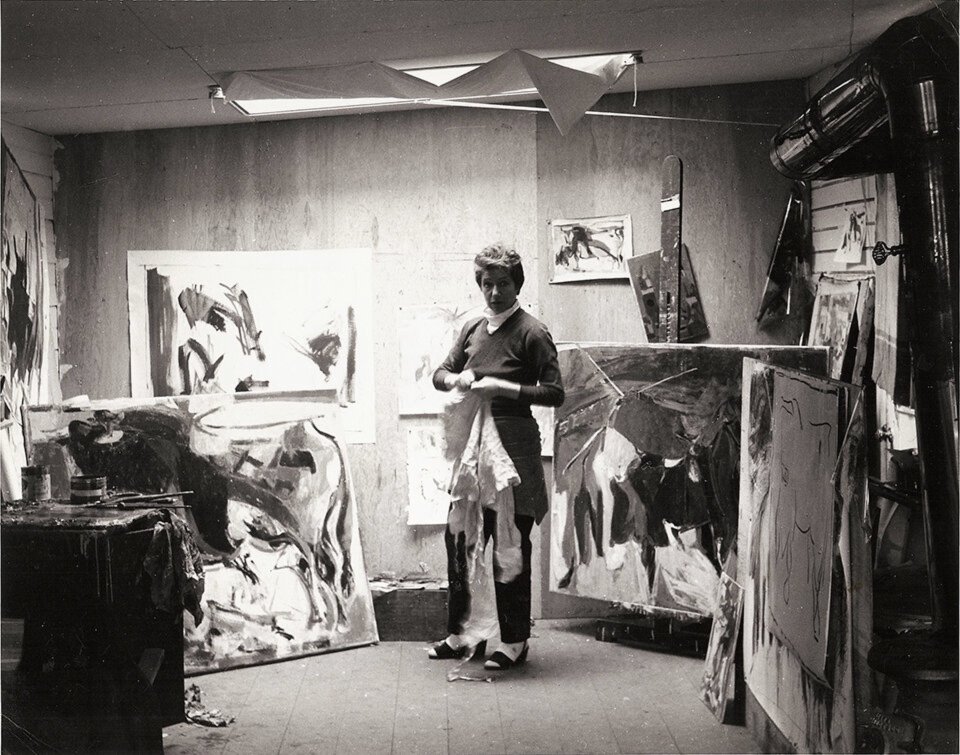
1950s
-
1950
New York: During an extended stay in New York, Biala is one of only three women—the other two being Louise Bourgeois and Hedda Sterne—invited to attend a private, closed to the public, discussion known to history as the Artist’s Session at Studio 35. Held on April 21-23, 1950, the premise of the forum is to discuss formally and among friends, the ideas defining the current movement in abstract art in New York. In addition to Biala the group included, James Brooks, Willem de Kooning, Jimmy Ernest, Herbert Ferber, Adolph Gottlieb, Hans Hofmann, Robert Motherwell, Barnett Newman, Pousette-Dart, Ad Reinhardt, David Smith among others.
During the discussion, Biala voiced her reservations about the direction of painting in New York:
“Like many of us, I was raised on the notion of ‘painterliness’—that what is most moving in painting is... its painterly qualities. But when I think of the art that I love—for example, the art of Spain, with its passion and noblesse—I wonder if ‘painterliness’ is not meant to serve something beyond itself...”
-
1951
Paris: Moving between apartments, Biala and Brustlein live in the studio of Cartier-Bresson.
Paris: Biala’s one-person exhibition at Galerie Jeanne Bucher (April 6-May 5). Biala accepts an invitation from the French Foreign Office to participate in the prominent exhibition Salon de Mai at the Musée d’art Moderne, Paris (May). She then exhibits in Selectionnee pour le Prix de la Critique, where she is awarded Bronze Medal.
-
1952
Washington, D.C.: McCarran-Walter Act is passed by United States Government requiring Biala and Brustlein, in order to retain their American citizenship, to return to the United States every six months.
Paris: Biala again accepts an invitation to participate in Salon de Mai of 1952. At an official cocktail reception Secretary Schuman addressed the artists, stressing the importance of cultural exchanges between nations. Biala was the only American invited.
Paris: French Art critic Guy Weelen, publishes a catalogue on Biala including her in his collected series Artistes de ce Temps (December 12).
-
1953
New York: Biala’s exhibits at the Stable Gallery (April 27-May 16). She continues to exhibit there regularly until 1963. Her passion for Spanish painting becomes evident in her work through theme and composition.
Paris: Friendships continue to develop with European artists including Alberto Giacometti.
New Jersey: Biala and Brustlein purchase a small farm house in Peapack (late 1953).
-
1954
Paris: Biala is included in the review Nouvelles de Paris, in the Paris edition of Vogue. Other artists include Vera Pagava, Chagall, Maillol, and Picasso.
Paris: Henri Matisse dies at the age of 84 (November 3). No single artist had more an impression on Biala. “I have always had Matisse in my belly,” she wrote.
-
1955
New York: Whitney Museum of American Art purchases Black Stove for its permanent collection.
-
1956
New York: Biala Paints a Picture appears in Art News (April). The article features photographs of Biala painting by Rudy Burckhardt.
New York: It’s Spring, It’s Spring is published and is the first of many children’s picture books written by Biala and illustrated by Brustlein (New York: Whittlesey House).
-
1957
Paris: Constanti Brancusi dies (March 16). Biala and Brustlein visit Peggy Guggenheim in Venice (April 23).
New York: Biala’s new paintings open at Stable Gallery (October 15-November 2) featuring the artist’s bullfight paintings.
-
1958
Paris: Biala’s new paintings opens at Galerie Jeanne Bucher (April 25-May 24) featuring the artist’s collages.
Paris: Exhibits at the Ecole de Paris at Galerie Charpentier, Paris, and receives an honorable mention at the Laureate du Prix de La Critique, Paris (1958). For a short time large gestural abstraction become the defining feature in her work. Friendships develop with artists Joan Mitchell, Shirley Jaffe, and Viera da Silva.
-
1959
Massachusetts: Exhibition Janice Biala, Edwin Dickinson and Jack Tworkov, opens at HCE Gallery, Provincetown (August).
New York: Minette is published. It is Biala’s second children’s picture book illustrated by Alain (New York: Whittlesey House).
New York: Frank Lloyd Wright’s Solomon R. Guggenheim Museum opens to the public (October 21), just six months after Wright’s death. From the beginning, the relationship between the breathtaking architecture of the building and the art it was built to display inspires controversy and debate.

“Like many of us, I was raised on the notion of painterliness—that what is most moving in painting is... its painterly qualities. But when I think of the art that I love—for example, the art of Spain, with its passion and noblesse—I wonder if painterliness is not meant to serve something beyond itself…”
1960s
-
1961
Paris: Biala participates in the Formes et Couleurs at Galerie Charpentier. John Ashbery remarks: “The finest painting in the show is easily […] by Janice Biala, which uses abstract and figurative techniques to piece together a remarkably complete portrait that exists on several levels—as painting, as an impression of physical truth, as a perception of the world of the spirit.”
-
1962
Paris: Exhibits gouaches and collages at Galerie Point Cardinal (May). The exhibition receives an astonishing response from the French press as reported in Le Monde, L’Intransigeant, Carrefour, Le Figaro, and Les Lettres Françaises.
Jerusalem (June): Biala exhibits fifteen oil paintings at Rina Gallery.
Paris (June): The Musée de Rennes hosts the first of many museum exhibitions dedicated to her work.
-
1963
New York (January): Biala’s exhibition at the Stable Gallery is highlighted as one of three “Star Shows for 1963” by Art News.
-
1965
Washington, D.C.: McCarran Act is repealed. Biala and Brustlein make Paris their permanent home.
Paris: Biala and Daniel Brustlein opens at the Musée des Beaux-Arts. The exhibit marks the first of many two-person shows together.
-
1966
Chur, Switzerland (January 11): Alberto Giacometti dies. “We are terribly saddened by the death of Giacometti,” Biala wrote, “He was the very essence of the true artists and he was a wonderful friend too.”
Berlin (March): Participates in 10 Américains de Paris, American Cultural Center.
Paris: Receives an honorable mention by the jurors at the 10th Prix International du Gemmail.
New York: The Whitney Museum of American Art, designed by Marcel Breuer, opens on Madison Avenue.
-
1967
Paris: Art critic René Barotte spotlights her work with a full-page interview in the l’Intransigeant. Her one-person show opens at Galerie Jacob.
New York: Little Bear’s Christmas is published (New York: Lothrop, Lee & Shepard Company). The first in a series of six children’s books written by Biala and illustrated by Mariana F. Curtiss.
-
1968
New York: Participates in Contemporary Portraits at Museum of Modern Art.
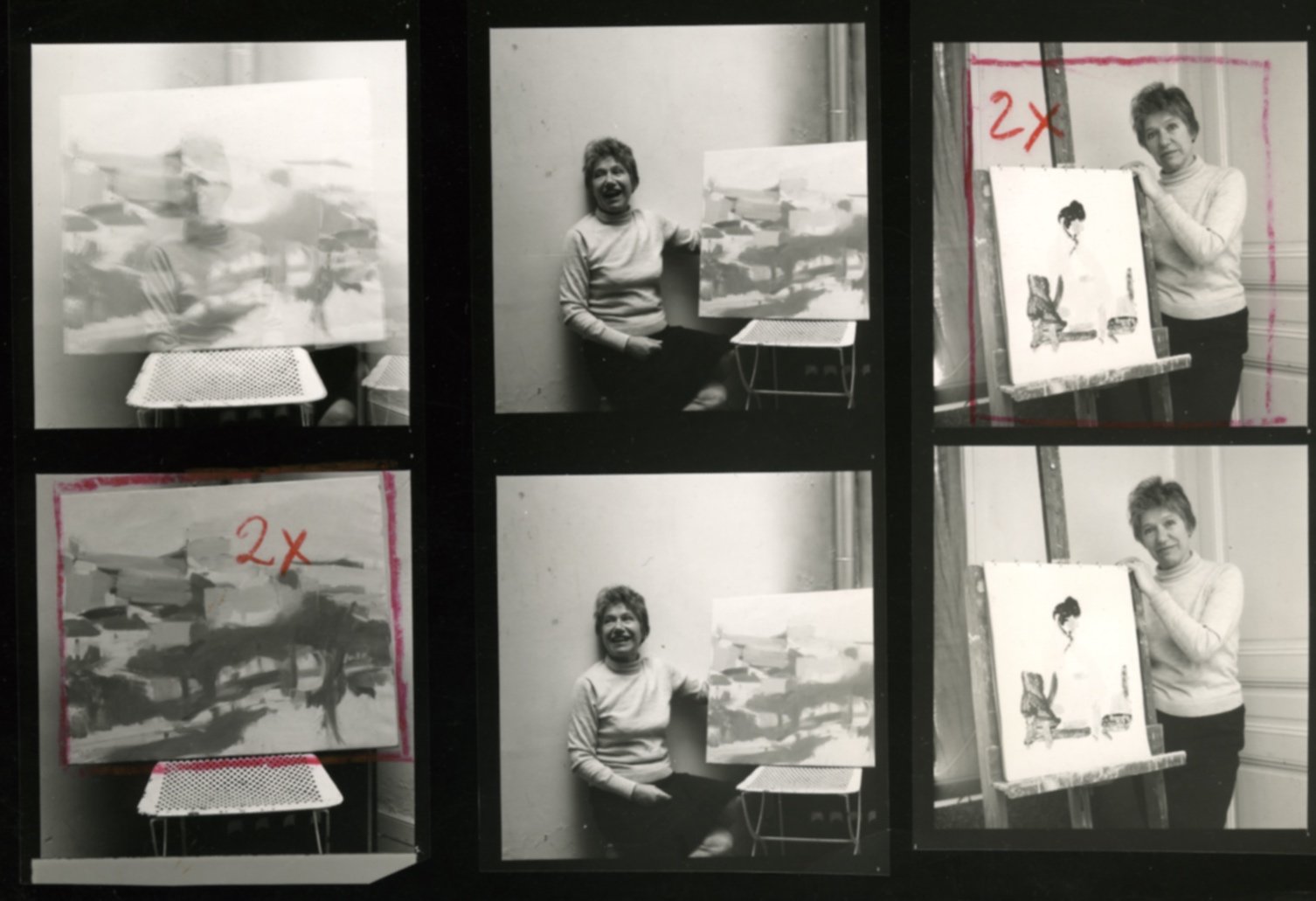
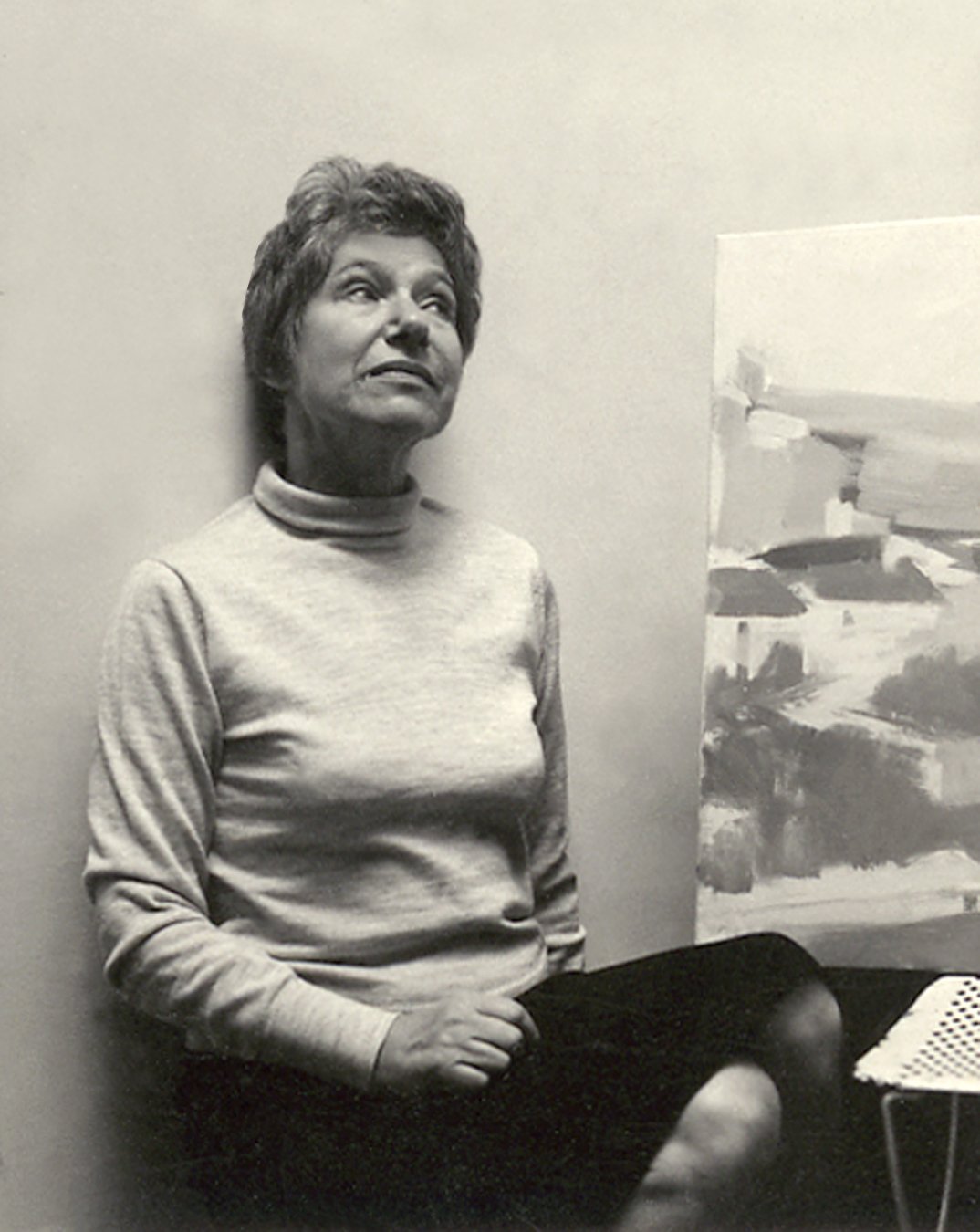
1970s
-
1970
Paris (January): Portraits de L'Oiseau-Qui-N'Existe-Pas opens at Musée des Beaux-Arts. A great personality of Parisian literary and artistic life, Claude Aveline (1901-1992) wrote a poem in 1950 which he entitled "Portrait of the bird that doesn’t exist", in the guise of a bird that he had previously drawn with colored pencils. He subsequently asked artists to paint his portrait “according to their imagination.” Between 1956 and 1963, it constituted a first “aviary”, then a second between 1978 and 1982.
-
1971
Paris: The French Administer of Cultural Affairs, Jacque Duhamel presents Biala with an honorable mention at Le Prix Paul Louis Weiller at the Musée Marmottan.
-
1972
Participates in Six American Painters, which tours museums throughout France including a stop in Brussels and Amsterdam.
-
1973
Mougins, France: Pablo Picasso dies (April 8).
-
1976
Washington, D.C.: The Golden Door: Artist-immigrants of America, 1876-1976, opens at the Hirshhorn Museum in Washington, D.C. While Biala does not participate in the exhibition, critic Hilton Kramer of The New York Times notes her obvious absence: “…why, by the way, is Biala, a serious artist, not represented by some paintings in the show?” Mr. Kramer would continue to champion her work well into the 1980’s.
-
1977
Paris: Her paintings are featured in Americans in Paris at Centre George Pompidou, Paris.
-
1978
New York: Biala begins exhibiting regularly at the Gruenebaum Gallery. Hilton Kramer describing the work as ‘lyrical’ and ‘dazzling.’

1980s
-
1981
New York: Reviewing her exhibition at the Gruenebaum Gallery (October), critic Hilton Kramer cites, “Biala has a wonderful sense of place and a flawless eye for the way place is defined by light.”
-
1982
New York: Critic Elizabeth Frank describes Biala as the ‘torchbearer of the tradition of virtuoso elegance in French painting,” in her review of Biala’s January exhibition at Gruenebaum.
Provincetown: Jack Tworkov dies (September 4).
-
1985
New York: Biala’s exhibition of paintings inaugurates Gruenebaum’s new downtown space at 415 Broadway. Critic John Russell reviews the show, “For the inaugural show in its new downtown space, the Gruenebaum Gallery has turned to Janice Biala, a painter well know both for the restrained seduction of her way with color and her ability to bring new life to even the most familiar…”
-
1989
New York: New York Times critic Michael Brenson spotlights Biala in an article that also features Joan Mitchell and Shirley Jaffe titled Three Who Where Warmed by the City of Light.
Pontoise, France: Musée Tavet opens a one-person exhibition of Biala’s work (December 17).
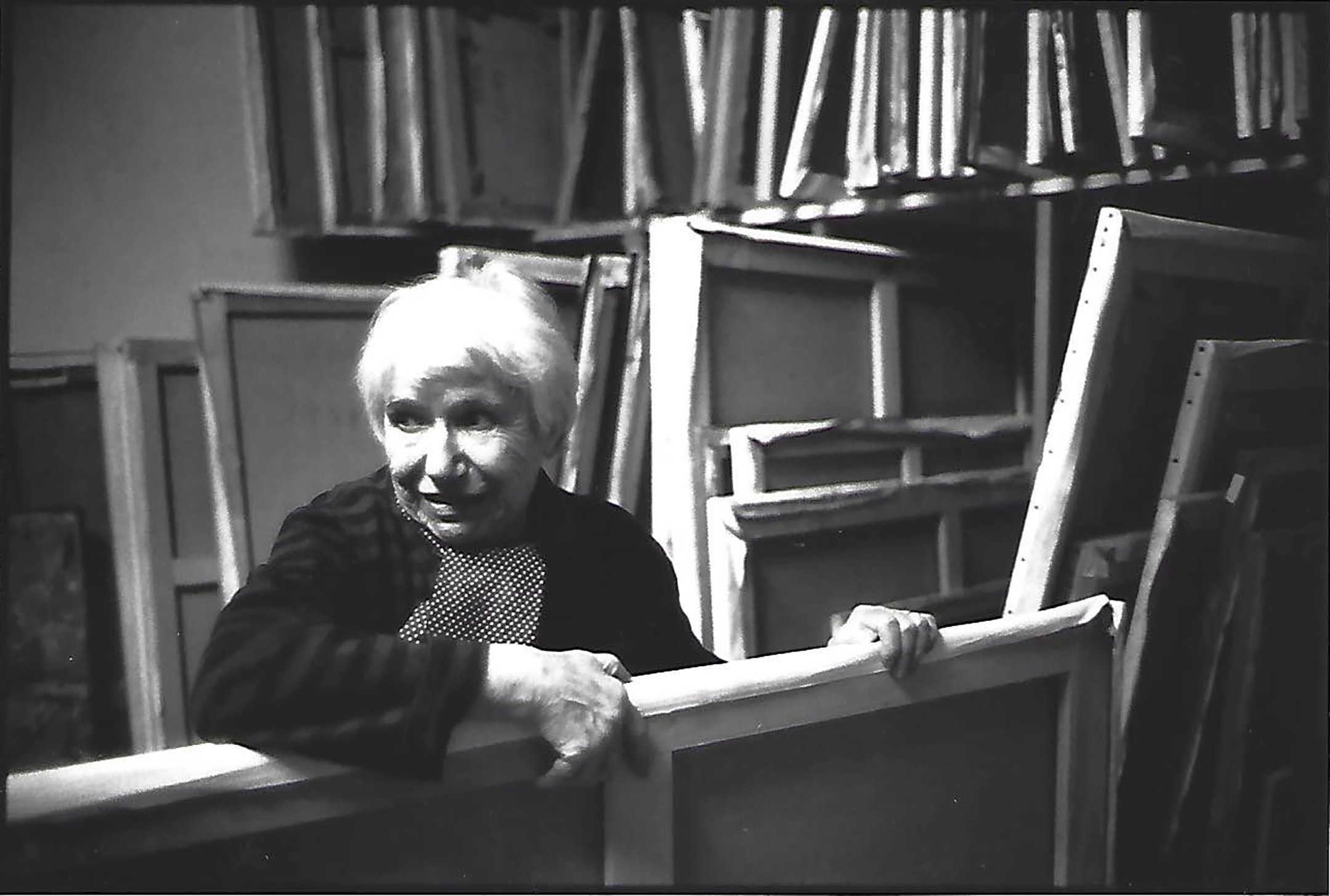
1990 – 2006
-
1990
New York: Biala begins exhibiting at the Kouros Gallery. Michael Brenson describes the work as ‘intimate’, alluring’ and ‘secretive.’ He also proclaims, “This 86-year-old marvel deserves a retrospective.”
-
1991
California: Biala exhibits for the first time on the West Coast with an exhibition at Louis Newman Galleries, Beverly Hills.
-
1993
Paris: Biala celebrates her 90th birthday and continues to receive critical acclaim both in New York and abroad. Intimate interiors and paintings of flowers define this period.
-
1996
New York: Biala: Five Decades opens at Kouros Gallery (April).
Paris: Daniel Brustlein dies (July 14). Biala would continue to work but her productivity slows with the death of Alain.
-
1997
New York: de Kooning dies (March 19).
Paris: Biala exhibits in Natures Mortes du XX Siecle at Musée de Pontoise (May 24-September 28).
Paris: Her work is included in the exhibition Artistes Américains en France at Mona Bismarck Foundation (October 14-November 28). The exhibition includes works by Norman Bluhm, David Budd, Sam Francis, Shirley Jaffe, and Joan Mitchell among others. This exhibition marks the last exhibition of her work in Paris during her lifetime.
-
1999
New York: Biala’s last one-person exhibition during her lifetime opens at Kouros Gallery.
-
2000
Paris: Biala dies in her home at the age of 97 (September 24). Her obituary appears in The New York Times written by Roberta Smith: “[her art] spanned two art capitals and several generations […] belonging to a trans-Atlantic tradition that included French painters like Matisse, Bonnard and Marquet, as well as Milton Avery and Edward Hopper.
-
2006
New York: Biala’s life and work experiences a resurgence of interest. An extensive profile by Jean Nathan appears in American edition of Vogue magazine (January). Biala: Selected Paintings opens at Tibor de Nagy Gallery (January 5).